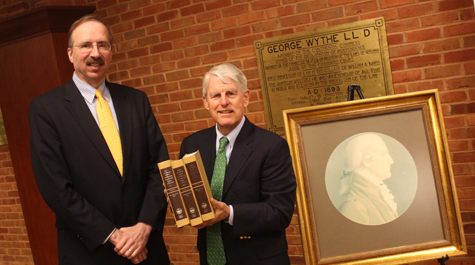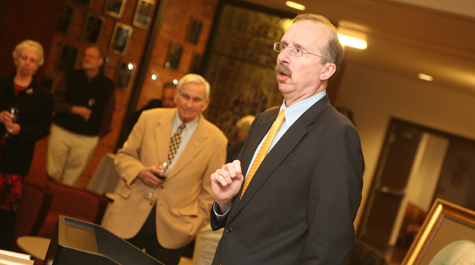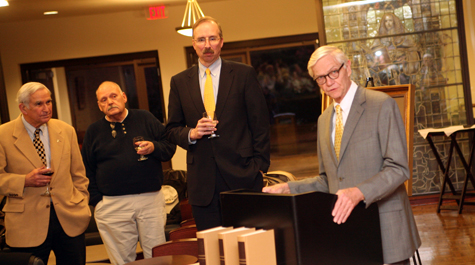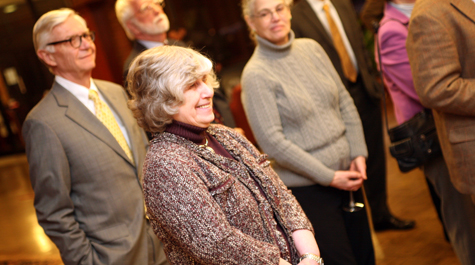Law School celebrates publication of St. George Tucker's law papers
When you edit a magisterial 12-volume edition of the papers of John Marshall (1755-1835), what do you do for an encore?
If you're Charles Hobson, you tackle the law writings of St. George Tucker (1752-1827), William & Mary's second professor of law.
"In my career, I've had a second act," said Hobson, editor of the Law Papers of St. George Tucker at William & Mary's Omohundro Institute of Early American History and Culture. "Seven years ago, the 12th and final volume of John Marshall was published. I suppose I could have quietly exited the stage, but I didn’t."
Hobson took the stage on the evening of Tuesday, Jan. 22 at William & Mary Law School when Dean Davison Douglas and William & Mary faculty, staff, and friends celebrated the completion of his work on Tucker. The three-volume St. George Tucker's Law Reports and Selected Papers, 1782-1825 is being published on Jan. 28 by the University of North Carolina Press in conjunction with the Omohundro Institute.
A state and federal judge of considerable merit, and probably the most influential legal scholar of the early nineteenth century, St. George Tucker is best known for his five-volume edition of Blackstone's Commentaries (1803), which, included hundreds of pages of his annotations. As a young man, Tucker came to William & Mary in 1771, and read law under the College's first professor of law, George Wythe, whom he succeeded as professor in 1790.
The publication of Tucker's notes brings to light an archive that is unmatched in terms of surviving legal papers. During his time as a state and then federal judge, Tucker compiled 35 notebooks reporting 1,100 cases in the Virginia courts. The result is a valuable resource for studying American law in its formative period.
"In the broadest terms, Tucker's law career as a professor, commentator, and judge was all of a piece," said Hobson. "If the grand theme of his Blackstone's Commentaries was the adaptation of English common law to the circumstance of early republican America, then Tucker's law reports provide ample documentation of the practical working out of that process."
Hobson received his doctorate in history from Emory University in 1971. A specialist in the constitutional and legal history of the early republic, he has written articles on James Madison and John Marshall, and is the author of The Great Chief Justice: John Marshall and the Rule of Law (1996). He completed his 12-volume annotated edition of John Marshall's correspondence and papers in 2006, and also coedited the papers of James Madison.
On hand to celebrate the publication of Tucker's notes, William & Mary President Taylor Reveley referred to Tucker as a "protean figure in American law." As the former dean of the Law School, too, Reveley was particularly glad that Tucker's work was in the hands of a scholar as meticulous as Hobson.
"It’s another brilliant editing job by one of the masters of the craft," Reveley said.
 Skip to main content
Skip to main content




